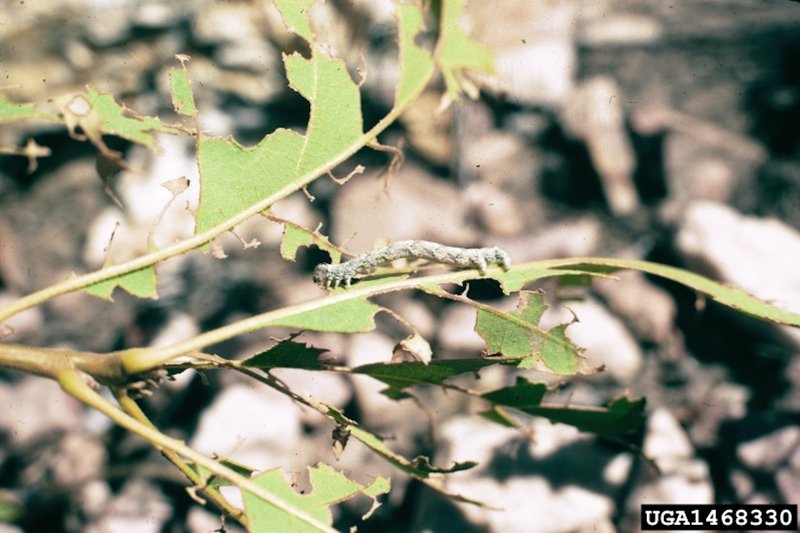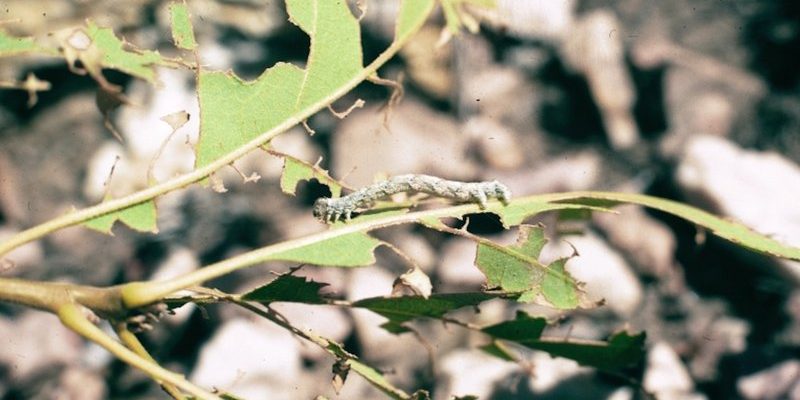
Inchworms, which are actually the larvae of certain moths, can often be seen among foliage, and many gardeners fret over whether they’re causing harm. It can be a bit like trying to decipher whether a charming guest at a dinner party is there to enjoy the food or sneak a few bites when you’re not looking. Let’s explore whether inchworms are harmful to garden plants and how you can manage their presence effectively.
What Are Inchworms?
You might be asking yourself, “What exactly are these little guys?” Inchworms, or measuring worms, belong to the Geometridae family of moths. Their unique movement—swaying from side to side and appearing to measure the distance between points—gives them their nickname. They take on various colors, typically green or brown, which allows them to blend seamlessly with leaves.
These critters start their lives as eggs laid by adult moths. Once they hatch, they begin their journey through the plant world, munching on leaves and stems. By understanding what inchworms are, you can better identify if they’re causing damage to your garden.
How Do Inchworms Damage Plants?
You might be wondering why a tiny inchworm could pose any threat to your garden. Here’s the thing: while they’re not usually the most damaging pests, they have an appetite for leaves, which can create a noticeable impact if you’ve got a significant infestation. Inchworms mostly feed on newly sprouted leaves, particularly during the spring.
When a few inchworms take up residence in your garden, they can strip plants of their foliage. For young plants or seedlings, this can be particularly harmful, stunting their growth and even causing death in some cases. On more mature plants, the damage might be less severe, leading to a less-than-ideal appearance and potentially reduced yields if you’re growing vegetables.
Signs of Inchworm Infestation
Knowing the signs of an inchworm infestation can make a significant difference in how you manage your garden. Look for these key indicators:
- Missing Leaves: One of the biggest signs is the sudden absence of leaves, especially on young plants. If they look like they’ve been nibbling on a snack, that’s a good clue.
- Body Droppings: You might also find little black or brown droppings on the ground or on your plants. These tiny pellets are a sign that the inchworms are well-fed and busy.
- Visible Presence: Finally, if you spot the inchworms themselves, that’s a clear indication. Their green or brown bodies can easily blend in with foliage, so keep your eyes peeled.
Identifying these signs early can help you take prompt action to protect your plants.
Natural Methods to Control Inchworms
If you discover that inchworms have set up camp in your garden, don’t panic. There are some effective and natural ways to manage their population:
- Handpicking: One of the simplest methods is to check your plants regularly and remove any inchworms you find. Just make sure to wear gloves!
- Encouraging Natural Predators: Birds, spiders, and certain good bugs like ladybugs will happily feast on inchworms. By creating a balanced ecosystem (think inviting birds into your garden), you can keep their numbers in check.
- Neem Oil: This natural pesticide disrupts the life cycle of pests without harming beneficial insects. Just mix it with water and spray it on affected plants.
These methods are gentle on your garden and can help you maintain a healthy balance of nature.
Chemical Solutions: When to Consider Them
While natural control methods work for many gardeners, sometimes you might need a stronger approach. If your garden is facing a serious infestation, chemical insecticides can be effective. However, proceed with caution. Here’s what to consider:
- Choose Targeted Solutions: If you opt for chemicals, look for products specifically designed for caterpillars and inchworms. This reduces the risk of harming beneficial insects.
- Follow Instructions: Always carefully read and adhere to label instructions. Overuse of pesticides can lead to resistance and more significant problems down the line.
- Timing is Key: Apply treatments in the evening or early morning to minimize harm to beneficial pollinators like bees.
Using chemicals responsibly can keep your garden flourishing while handling pest issues.
Preventing Inchworms in the Future
Like most garden pests, prevention is key to keeping inchworms at bay. Here are some proactive steps you can take to minimize the risk:
- Regular Inspections: Check your plants frequently for any signs of pests. Early detection can save you a lot of headaches down the road.
- Healthy Soil: A healthy garden starts with healthy soil. Ensure your soil is rich in nutrients, which helps plants grow strong and resilient to pests.
- Diversity in Planting: Planting a variety of species can discourage infestations. Inchworms might be less attracted to a diverse garden compared to a monoculture.
By taking proactive measures, you can create an environment that is less welcoming to inchworms and other pests.
Are Inchworms Completely Harmful? A Balanced View
Honestly, inchworms aren’t the worst pests you can encounter in your garden. Yes, they can cause damage, especially if left unchecked, but they also play a role in the ecosystem. They’re a food source for birds and other creatures, which can help balance your garden’s food web.
So, are inchworms harmful to garden plants? The answer is nuanced. If you have just a few inchworms, they’re unlikely to cause significant harm. However, if you notice a larger presence, it’s time to take action. With a little care and attention, you can enjoy a vibrant garden while coexisting peacefully with these little inching guests.
In the end, understanding the role of inchworms and how to manage them can empower you as a gardener. With these insights and strategies in hand, you can keep your garden healthy and thriving for everyone involved—plants, predators, and yes, even the inchworms. Happy gardening!

